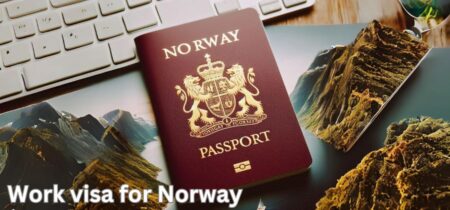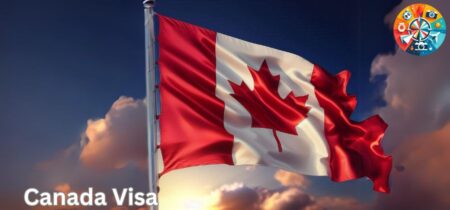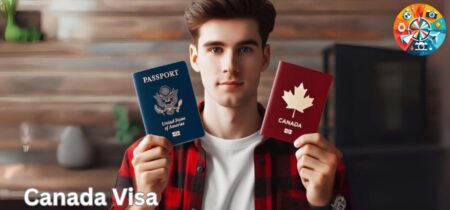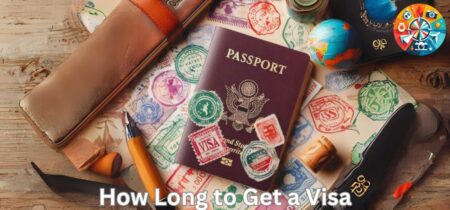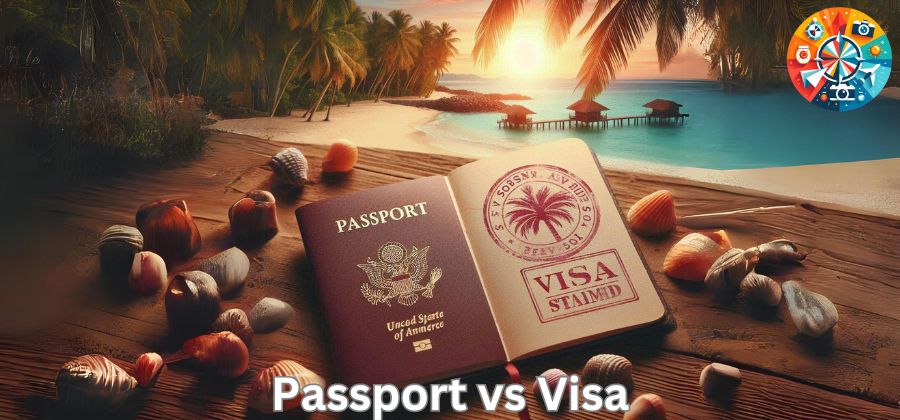
Most people have misconceptions about the usage or meaning of passports and visas, as well as believing that both of them serve the same purpose.
This piece seeks to highlight the differences between both of them as well as the permits used.
Essentially, passports and visas are vital documents used for international travel. They might possess certain similarities but serve different purposes.
Passports are issued to you by your country of origin or citizenship, which is used to establish your international identity and nationality.
A visa typically comes as a permission slip granted by a destination country. These slips, when duly stamped and signed, reside in a country within a specific time.
They are interconnected in such a way that they complement the essence of the other by enabling seamless travel, which is why understanding their roles and differences is crucial.
Let’s delve into the specifics by stating further distinctions about them, demystifying their functions, application processes, and other essential information you need to know.
Passport Basics
Role of a Passport
Think of having a gateway to international travel. A passport serves such a purpose. Invariably, it’s not just a piece of paper but also represents your national identity, your legal requirement, and your right to cross international borders.
The small booklet is also small but mighty in that it contains essential information which includes your photograph, name, date of birth, nationality, and a unique passport number for easy identification.
How to Obtain a Passport
These are the simple steps you need to follow to obtain your passport without stress:
- Gather the required documents
- Complete the application form
- Make payment of the application fee
- Submit your passport application
- Photoshoot and biometric data collection
- Wait for processing
Above all, remember to always plan to apply for your passport in advance or within the stipulated period of your travel date to avoid unforeseen circumstances.
Visa Essentials
What is a Visa and Why is it Needed?
Granting entry into a foreign country for a specific purpose and duration won’t be made possible without having a visa.
This is what makes it essential for international travelers. See visa as official consent from your host country that permits you to enter and reside within its borders within a specified period.
Types of Visas
Various forms of visas are available, depending on your purpose for traveling. Navigate downwards to learn the types of visas commonly used by international travelers.
- Tourist Visas
- Business Visas
- Student Visas
- Employment Visas
- Transit visas
Each of the visas listed above has distinct requirements and restrictions based on their essence and different purposes.
Passport vs. Visa Key Differences
Passport as Identification
What sets a passport apart from a visa is that the former serves as a primary form of identification, and this subsequently verifies a person’s citizenship and identity.
Additionally, a passport contains the basic details of an international traveler, as well as biometric data, fingerprints, or facial recognition technology, which plays a crucial role in enhancing its security and authenticity since it is what customs and immigration officers rely upon to confirm the identity of travelers as well as grant them entry into a foreign country.
Visa as Entry Permission
As an entry permission granted by a foreign country, a visa is often affixed to your passport. The distinguishing feature of a visa is that it states the purpose of the duration of your stay and also the conditions stipulating the mode under which you are allowed to enter and remain within such a country.
Tourists, expatriates, and international students see a visa as an official endorsement indicating that you meet the criteria to do several things, like paying a visit, working, studying, or conducting business within a given period, coupled with the general regulation kicking against violations of the terms of a visa, which can lead to legal consequences as well as deportation.
Application Process
Applying for a Passport
To give a detailed analysis of what was explained earlier when applying for a passport, the first thing to do is to gather all essential documents like proof of citizenship, government-issued ID, and passport photos.
Applicants are also required to complete the application form, by filling it out and paying the applicable fees, then finally submitting the application and waiting for processing which can vary in terms of the backlog of other passport applications.
Applying for a Visa
Numerous steps are involved when it comes to applying for a visa since it differs from the application for a passport. The steps to be followed are stated below;
- The application form must be filled in correctly and accurately with necessary documents like passports, photographs, and other important paperwork.
- Pay the visa fee
- Schedule an appointment at the embassy or consulate
- Attend the interview if necessary
- Then await your visa processing outcome
These are all the required steps to be taken and the visa processing outcome might take several weeks before you get a response from the embassy.
Common Visa Application Documents
Below are some common visa application documents required from the embassy when applying to secure a visa:
- Passport
- Visa application form
- Passport-sized photos
- Proof of payment for visa application fee
- Travel Itinerary
- Proof of accommodation
- Proof of financial means
- Travel Insurance
- Letter of purpose
- Other additional supporting documents
Check the specific visa requirements of any country you’re planning to visit because they may differ over time in terms of their policies.
FAQs
Who gives the visa?
Visas are granted by a foreign country’s immigration authorities after a thorough review and verification of your documents and qualifications. Obtaining a visa signifies your authorization to enter a foreign nation and remain there for a designated duration.
What happens if the visa is rejected?
If your visa application is denied due to ineligibility, you have the option to reapply in the future. In such cases, except for instances of outright refusal, you will be required to submit a fresh visa application and pay the visa application fee once more.
What is the full meaning of a visa?
A VISA stands for Visitors International Stay Admission. It is a worldwide electronic system employed by governments and financial institutions for the processing of various immigration-related documents, including visas.
What does a visa look like?
A visa is typically a label affixed to your passport, featuring your personal information, a photograph, and the approved duration of your stay in a particular country.
However, there are instances where visas are issued independently, existing as separate documents. This includes electronic visas, which require printing for presentation.
How do I know my visa was approved?
You can verify your visa stamping status online by accessing the official website of the visa issuing authority in your desired travel destination.
This can be done by inputting either your passport number or your application or reference number. Additionally, many countries offer the option to pay the visa fee electronically through their online platforms.
Conclusion
Understanding the difference between passports and visas presupposes that you also know the distinct roles they perform and how one cannot do without the other.
The process for which a passport can be applied for differs from a visa, as does the timeline for when both requests would be approved.



